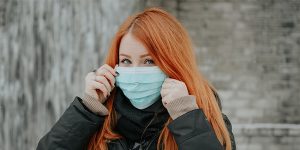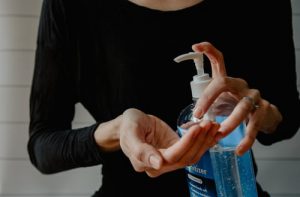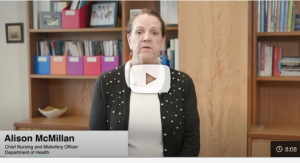1:30min

Image: Unsplash, Pille-Riin Priske
By Helen Carter
Journalist
Optometry Australia has updated information on mask use and advised optometrists to consider improved ventilation while practising to reduce the risk of coronavirus transmission.
Optometry Australia’s updated advice suggests optometrists should be considering ventilation, including opening windows (or at least the consulting room door) where practical to improve airflow. This is due to new understanding about how COVID-19 is transmitted.
The organisation also advises that patients living in areas under stage 3 restrictions (including currently Melbourne and the Shire of Mitchell) should be reminded to wear a mask to optometry appointments (or optometrists should consider providing them with a mask on arrival.) The current government recommendation remains that all health practitioners in Greater Melbourne and Mitchell Shire seeing any patient for any reason should wear a standard surgical mask.
The World Health Organization has recently reclarified modes of transmission for SARS-CoV-2 and suggested this can now be classified as airborne (<5um), droplet (>5-10um), and fomite transmission (droplet-contaminated surfaces).
‘The World Health Organisation released its updated scientific brief on 09 July 2020, explaining that airborne transmission as dissemination of droplet nuclei (aerosols) <5um in diameter can remain infectious when suspended in air, over both long distances and time,’ information updated on Optometry Australia’s website.
The advice now includes the suggestion that airborne viral RNA may be present for up to three hours, highlighting the importance of barrier protection such as masks when social distancing is not possible.
‘There are theories that respiratory droplets can in turn generate microscopic aerosols, but so can talking and breathing.
‘This has been proven for other similar SARS viruses, but not yet for COVID-19. Case studies have been presented when transmission seems to have occurred in indoor, poorly ventilated areas such as fitness classes, choirs and restaurants. Experimental studies in laboratory conditions suggested RNA can be present for three hours, however studies conducted in health care settings have been inconclusive.’

Coronavirus image, Fusion Medical Animation, Unsplash
Open windows, adjust air conditioning
The Australian Department of Health Coronavirus Disease (COVID-19) Social distancing guidelines suggest to “Consider opening windows and adjusting air conditioning for more ventilation.”
The Centers for Disease Control and Prevention (CDC) in the United States updated its guidance as of July 9, 2020 around optimising the use of engineering controls and indoor air quality. It also mentions considering the addition of portable HEPA filtration units to augment air quality in healthcare facilities.
In many optometry community settings, there is often limited control over ventilation, and obviously ventilation standards are not the same as controlled hospital settings.
The Federation of European Heating, Ventilation and Air Conditioning Associations recommends:
- continuing ventilation systems for 24/7, which may reduce airborne viral load
- supplying as much outside air as possible, and have as many windows open as possible
- have ventilation in toilet areas on 24/7 to reduce faecal/oral route transmission
- do not use re-circulation systems
Preliminary data suggests that in order to have any significant effect on COVID-19, temperatures would have to be in excess of 30 degrees and humidity above 80 per cent therefore heating and cooling systems can be operated on the basis of thermal comfort, and do not affect viral spread.
Read other ventilation tips on the Optometry Australia website.
Infectious diseases experts claimed in the Medical Journal of Australia on Wednesday that “evidence for airborne transmission was growing.” They said there had been more than 500 health worker infections in Australia to July 2020, but no national reporting on health worker infections and lack of transparency in attribution of the source of their infection.
Use masks in lockdown areas and replace if soiled, wet or on for 4 hours
Last week, we reported that Australia’s Deputy Chief Medical Officer Professor Michael Kidd advised “that any health professionals in the hotspot areas of Metropolitan Melbourne and the Shire of Mitchell are advised to use a surgical mask for any procedure/treatment where they are unable to maintain a safe physical distance. This is not a legally enforceable directive, but it is strong precautionary advice.”
In a recent webinar for Allied Health Professionals he also suggested replacing masks that are soiled, wet or have been worn for four hours and has advised that “the wisest thing to do if you have to take your mask off is to discard it and put on a fresh one.”

Image, Unsplash
Maintaining good infection control procedures including the “five moments of hand hygiene,” maintaining physical distancing when possible and appropriate viricidal cleaning of surfaces were urged. He also reminded practitioners in COVID-19 hotspots to use telehealth where possible.
The World Health Organization also recently changed its advice to health workers practising in areas of known community transmission (or intense COVID-19 outbreaks) recommending they should continuously wear a medical mask throughout their entire shift.
Victoria’s Chief Health Officer Dr Brett Sutton recommended on 10 July that adults living in areas under Stage 3 restrictions wear a face mask when outside their home if it is difficult to keep 1.5 metres apart from other people.
Optometry Australia suggests that patients living in areas under stage 3 restrictions (including currently Melbourne and the Shire of Mitchell) should be reminded to wear a mask to optometry appointments or optometrists should consider providing them with a mask on arrival.
Updated face mask information
The mask advice, updated yesterday on the Face masks and other PPE section of our website, aligns with updated advice on the Victorian State Government Personal Protective Equipment (PPE) Taskforce webpage.
Because information regarding face masks for general consulting in non-COVID suspicious patients has been conflicting, confusing and changes frequently we have updated information on our website to be used as a guide for members to make decisions in their practice. Your age, health status and community transmission at your location are all important factors to consider.
Community transmission in Victoria is currently the highest it has ever been, and more infections have been recorded in July than throughout the rest of the COVID-19 outbreak combined. With another 317 new cases recorded overnight on Wednesday, Victoria’s tally for the first 16 days of July is 2794, compared to 2200 new cases for the first 158 days of the pandemic from January 25 to June 30.
Further information on this topic can be found in our online resources and section on “Should I be wearing a mask?” where we have flagged updated research published in The Lancet supporting mask use in areas with community transmission.

A video by Australia’s Chief Nursing and Midwifery officer Alison McMillan, pictured above, shows how allied health professionals should wear masks. (donning PPE starts at ~4:00 mins.)
We realise staying up to date in the rapidly changing world of COVID-19 related information can be difficult and time consuming. We also appreciate there is a vast amount of information on our COVID-19 resources hub which can make it challenging to find updates. We provide all Optometry Australia members with an ‘opt-in’ email subscription service which will alert you when new information is updated online. Click this link to subscribe.
Tagged as: COVID-19, Eye examinations, Paediatric optometry